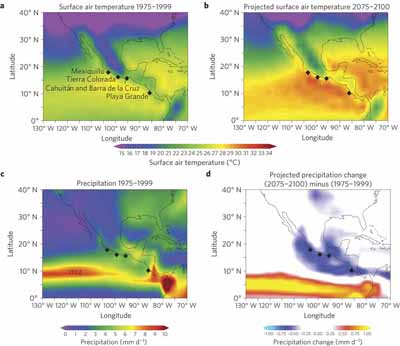Adult leatherback sea turtle. Image from Wikimedia Commons
A study that has just been published in the journal Nature Climate Change has looked into the projected response of endangered leatherback turtles nesting on the coastline of Costa Rica as a result of climate change and rising air temperatures.
For their study, the scientists combined an Earth system model, along with climate model projections assessed by the Intergovernmental Panel on Climate Change and a population dynamics model. They said these combined models were used to estimate a 7pc per decade decline in the Costa Rica nesting population over the 21st century.
The researchers said that critically endangered leatherback turtles in the eastern Pacific Ocean were ideal candidates for the study because their sensitivity to contemporary climate variability has already been studied to a great extent.
As a result of their analysis, the researchers said it could suggest a potential marked decline in the eastern Pacific leatherback population that nests in Costa Rica. In their study, they said this was primarily driven by declining hatching success and emergence rate due to increasing air temperatures.
However, the scientists said that if incidental fisheries mortality ceases, this population still faces the challenge of recovery in what they termed a “rapidly changing climate”.
They said that while changes in ocean conditions had a small effect on the population, the 2.5°C warming of the Costa Rica nesting beach was the main driver of the decline through reduced hatching success and hatchling emergence rate.
The scientists added that long generation time of leatherback sea turtles may prevent them from adapting through evolution to rapid climate change.

Surface air temperature and precipitation projections under the Intergovernmental Panel on Climate Change SRES A2 in the area encompassing the four main leatherback nesting sites in the eastern Pacific. Image by Nature Climate Change